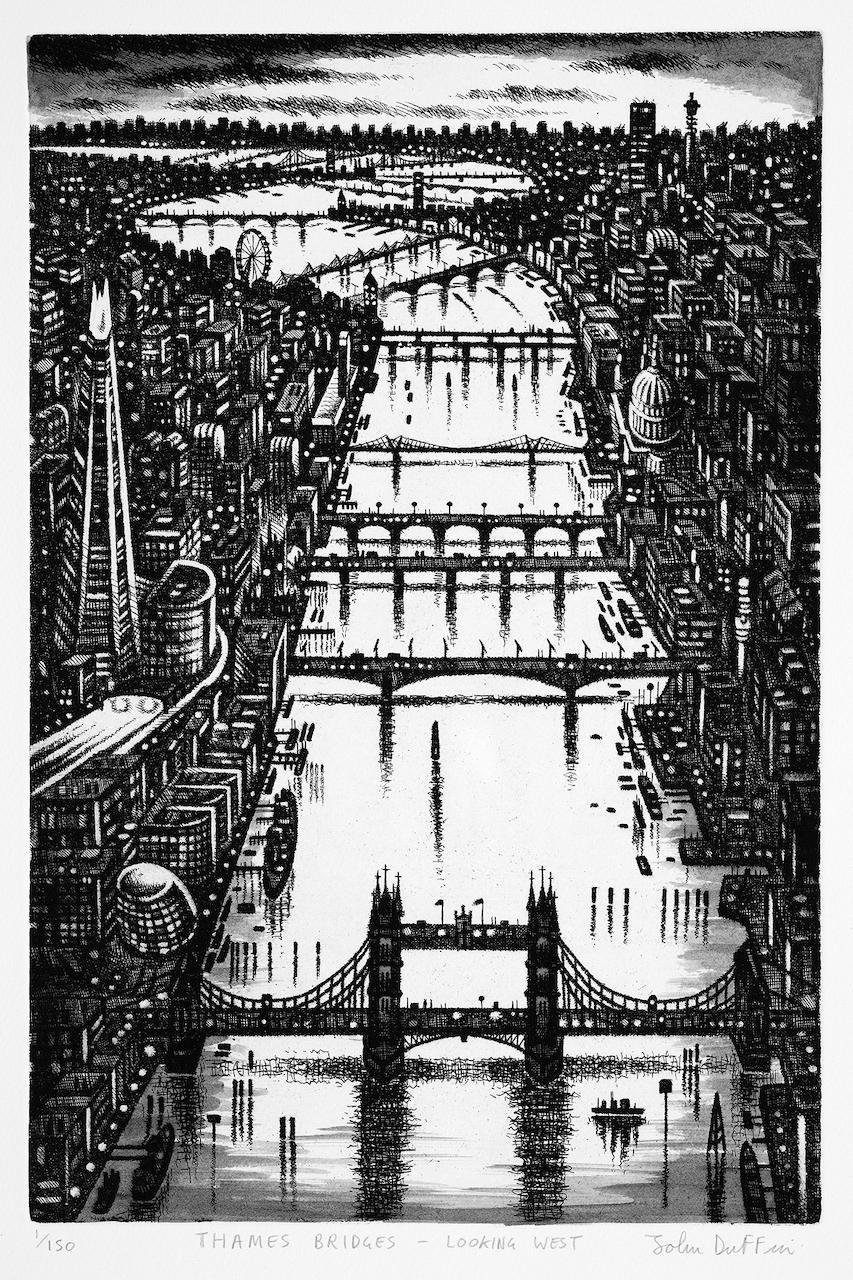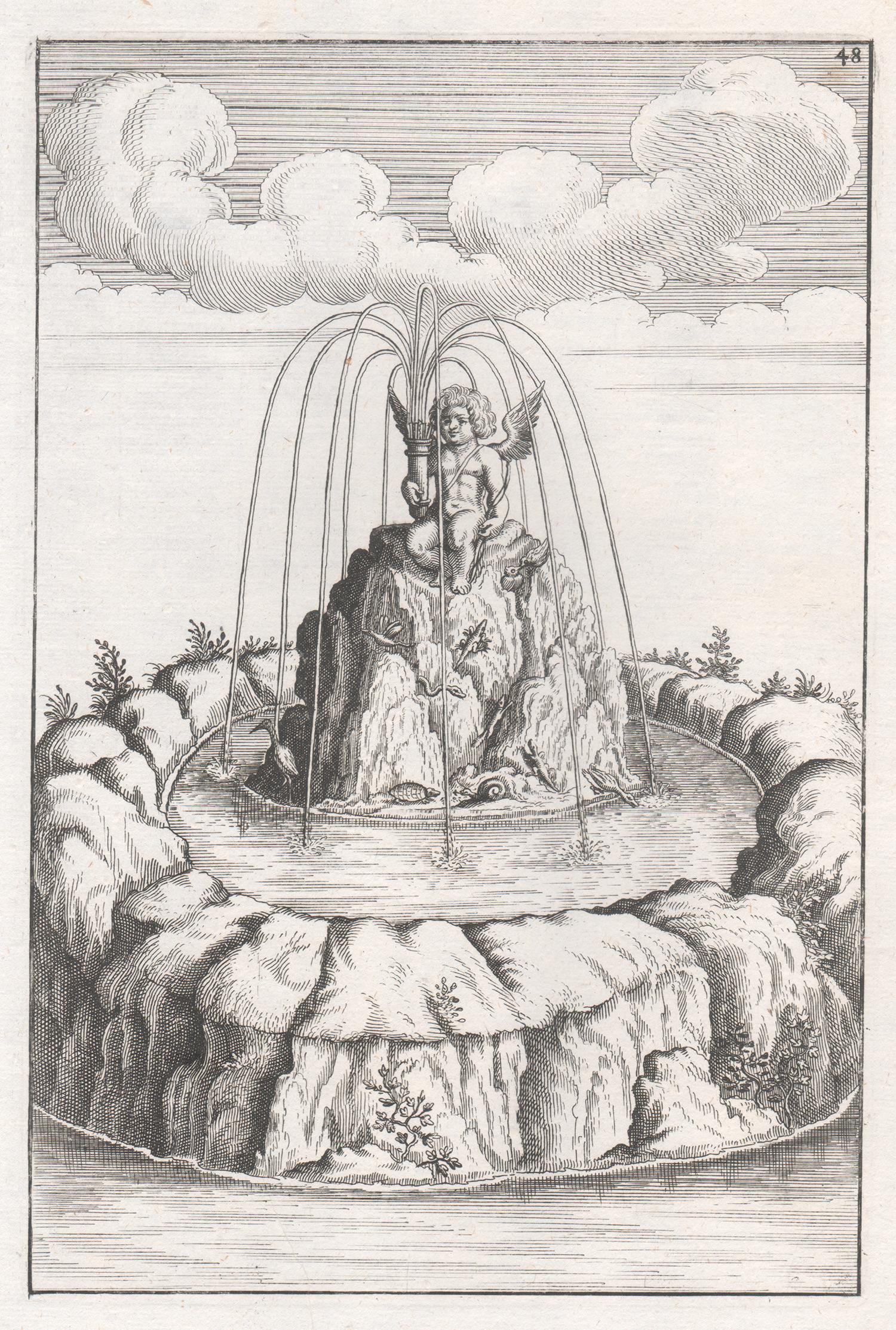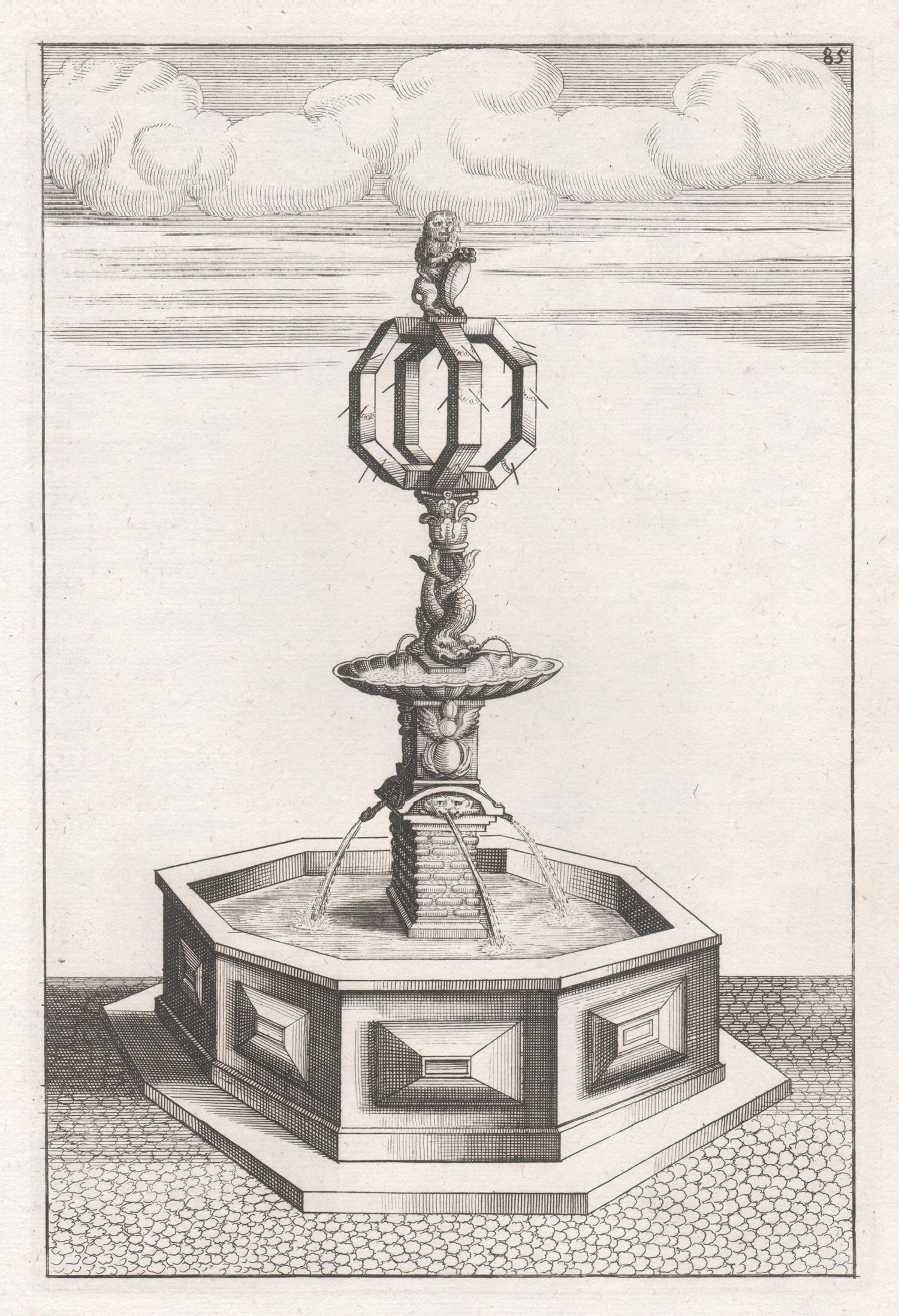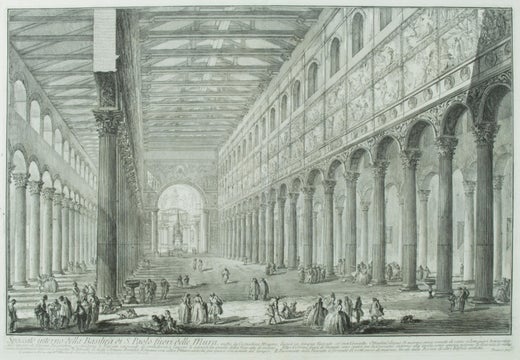Items Similar to Veduta del Romano Camipidpglio con scalinata che va alla chisea d’Araceli (The C
Want more images or videos?
Request additional images or videos from the seller
1 of 9
Giovanni Battista PiranesiVeduta del Romano Camipidpglio con scalinata che va alla chisea d’Araceli (The C1775
1775
About the Item
Veduta del Romano Camipidpglio con scalinata che va alla chisea d’Araceli (The Capitol and the Steps of S. Maria in Aracoeli)
Etching, 1775
Watermark: Double Circle Fleur de Lys
A lifetime impression with the price etching in the plate
Printed in Rome, before the plates are moved to Paris and the numerous posthumous editions
Reference: Hind 38 ii/IV
Robison 38 ii/V with the price
Wilton Ely 190
Condition: A fine Roman printing in very good condition. Usual slight centerfold visible, margins reduced for previous framing, but still ample. Good impression with strong contrasts.
- Creator:Giovanni Battista Piranesi (1720-1778, Italian)
- Creation Year:1775
- Dimensions:Height: 15.75 in (40.01 cm)Width: 21.375 in (54.3 cm)
- Medium:
- Movement & Style:
- Period:1770-1779
- Condition:A bright snappy impression. The sheet clean.
- Gallery Location:Fairlawn, OH
- Reference Number:
Giovanni Battista Piranesi
Piranesi was born in Venice in 1720 and died in Rome in 1778. He was the son of a stone mason and was trained as an architect. After a slow start he eventually achieved great success as an architect, archaeologist, artist, designer, collector, and antiquities dealer. His mission was to glorify the architecture of ancient Rome through his engravings and etchings. His highly dramatized prints often depict imaginary interiors and frequently include figures in mysterious activities, who are dwarfed by the magnitude of their monumental surroundings. Piranesi's style greatly influenced the neoclassical art movement of the late 18th century. His dramatic scenes inspired generations of set designers, as well as artists, architects and writers. His prints have continued to increase in value to institutions and collectors.
About the Seller
5.0
Recognized Seller
These prestigious sellers are industry leaders and represent the highest echelon for item quality and design.
Platinum Seller
These expertly vetted sellers are 1stDibs' most experienced sellers and are rated highest by our customers.
Established in 1978
1stDibs seller since 2013
716 sales on 1stDibs
Typical response time: 1 hour
Associations
International Fine Print Dealers Association
- ShippingRetrieving quote...Ships From: Fairlawn, OH
- Return PolicyA return for this item may be initiated within 10 days of delivery.
More From This SellerView All
- Minneapolis at DuskBy Richard HaasLocated in Fairlawn, OHMinneapolis at Dusk Etching & aquatint printed in colors, 1993 Signed, titled and numbered in pencil Edition: 65 (19/65) Condition: Excellent This image depicts the Wells Fargo Center designed by Cesar Pelli Richard Haas (American, b.1936) is a practitioner of the trompe l'oeil artistic style, a technique that uses realistic images in a way that tricks the eye into perceiving the painting in three dimensions. Haas has painted hundreds of murals that incorporate trompe l'oeil methods in the depiction of the architectural features of the building. He was born in Spring Greene but grew up in Milwaukee, WI. He graduated in 1959 from the University of Wisconsin-Milwaukee with a Bachelor in Art. Instructors for his courses included Joseph Friebert (American, 1908–2002) and Robert Von Neuman (German, 1888–1976). Haas returned to his birthplace to work as a helper for his stonemason uncle, and he had an opportunity to view the work of the architect Frank Lloyd Wright (American, 1867–1959). He spent several years as an assistant professor at the University of Michigan before he moved to New York City in 1968. Haas spent 10 years teaching at Vermont's Bennington College, splitting his time between the school and New York. Haas worked for many years as an Abstract painter who used traditional canvas media. He later developed an interest in drawing and etching the details of late 19th century and early 20th century New York City buildings. The artist’s first outdoor mural, a commission to paint the cast iron façade at the corner of Prince Street and Greene Street, was completed in 1975. His other notable murals include Fort Worth, Texas' Homage to Chisholm Trail...Category
1990s Photorealist Landscape Prints
MaterialsEtching
- La Grande Cascade de Saint CloudBy Alfredo MüllerLocated in Fairlawn, OHLa Grande Cascade de Saint Cloud Color aquatint on watermarked Arches J Perrigot paper, 1905 Signed by the artist in pencil lower right. (see photo) Edition: 100. Numbered "39" in pencil lower left. Titled in pencil verso Published by Edmund Sagot, Paris, his dry stamp lower right below signature. Image: 23-1/8 x 17-3/8" (58.7 x 44 cm.) From the British Museum: "Colour etcher. Born in Livorno from a family of wealthy Swiss cotton merchants, studied with Giuseppe Ciaranfi and Michele Gordigiani in Florence. In 1886 exhibited with Fattori, Achille Lega and Tommasi in the Prima Esposizione delle Belle Arti in Livorno. In 1888 he and his family moved to Paris, where he studied first with François Flameng until 1892 and later with Carolus-Duran. Müller remained in the French capital until the outbreak of the First World War, taking French citizenship in 1913. He worked in the countryside at Barbizon, Suresnes and elsewhere, but also made frequent visits to his native country, where he exhibited regularly in Florence with the Promotrice Fiorentine. His early work was indebted to Fattori and Plinio Nomellini, but he soon became interested in the Impressionists and was credited by the critic Mario Tinti with introducing the luminism of Monet into Italian art. Müller was a member of the Société des Artistes Indépendents and exhibited regularly in the Paris dealer George Petit's annual exhibitions of colour prints. He made his first print in 1896, a lithographic portrait of the poet Paul Verlaine in the Café Procope. The following year Müller made his first colour aquatints. Among them were a series of illustrations to Dante's Divine Comedy. In style his etchings and aquatints were influenced by Manuel Robbe. Very occasionally he combined drypoint or soft ground etching with aquatint. Müller's principal publisher was Pierrefort, who also issued prints by Toulouse-Lautrec. After 1903 he largely abandoned aquatint for pure etching. Fourteen of his colour etchings were reproduced over a number of months in the weekly magazine 'Le Courrier français'. Müller also made a small number of colour lithographs, some of which were published by the Parisian print dealer Sagot. A single monotype of Mallarmé done in 1911, thirteen years after the poet's death in 1898, is recorded. Müller made a few landscape prints and a couple of etchings of fishing boats, but his principal subject was young women in long dresses. Often there is an aura of fin-de-siècle wistfulness. When he returned to Italy, he lived first in Taormina, then in Florence, and finally settled in a villa at Settignano. Müller largely abandoned printmaking after 1914. Only three more prints by him made in 1920, 1925 and 1933 are recorded after he moved back to his native country. Müller was a regular exhibitor in Florentine exhibitions, the most significant of which was the 1922 Primaverile Fiorentina. He returned to France in 1930 where he died in 1939. (Text by Martin Hopkinson)" Said to rival the fountains at Versailles, La Grande Cascade is still turned on for a few hours every Sunday in June. The Grande Cascade, constructed in 1664-1665 by Antoine Le Pautre has survived. The château was expanded by Phillipe de France, duc d'Orléans in the 17th century, and finally enlarged by Marie Antoinette in the 1780s. Napoleon I and Napoleon III also used the palace, which was a U-shaped scheme of three sections, open to the east. Destroyed by fire (with the exception of a few outbuildings and its majestic garden) in 1870, during the Franco-Prussian War. The burned-out shell stood until 1891, when it was demolished. The gardens were replanned by André Le Nôtre...Category
Early 1900s French School Prints and Multiples
MaterialsAquatint
- Desolation, S.C. or Deserted Cabins, Beauford, S.C.By Louis Oscar GriffithLocated in Fairlawn, OHDesolation, S.C. or Deserted Cabins, Beauford, S.C. Etching & Aquatint, c. 1930 Signed by the artist in pencil lower right (see photo) Annotated "Trial Proof" in pencil lower left co...Category
1930s American Impressionist Landscape Prints
MaterialsAquatint
- Brittany Landscape with FigureBy Louis Oscar GriffithLocated in Fairlawn, OHBrittany Landscape with Figure Etching & color aquatint, c. 1920 Signed lower right (see photo) Numbered lower left: "No. 21" (see photo) An early ...Category
1920s American Impressionist Landscape Prints
MaterialsAquatint
- View of the Ancient Structure built by Tarquinius Superbus called the Bel LidoBy Giovanni Battista PiranesiLocated in Fairlawn, OHView of the Ancient Structure built by Tarquinius Superbus called the Bel Lido, and like others built by Marcus Agrippa in the time of Augustus when he ...Category
1750s Old Masters Landscape Prints
MaterialsEtching
- The Ponte and Castel S. Angelo (Veduta del Ponte e Castello Sant' Angelo)By Giovanni Battista PiranesiLocated in Fairlawn, OHThe Ponte and Castel S. Angelo Veduta del Ponte e Castello Sant' Angelo Etching, 1754 Signed in the plate lower right above the caption From: Vedute di Roma A proper Roman printing with the price in the lower right corner. Printed on a Double Circle Fleur de Lys watermark paper, c. 1760, with full margins. A brilliant impression . Note: A view of the Tiber River, Castello Sant' Angelo and St. Peter's Basilica in the distance. Watermark: Double Circle Fleur de Lys References: Robison c/g Hind 29 ii/VII Foclllon 793 Condition: A Roman printing before the numbers added in Paris. Printed on a Double Circle Fleur-de-Lys watermark paper. Right margin folded over 5/8 inches for framing. Usual centerfold as issued in the album. Slight aging to the sheet. Binding holes at the left margin edge Framed with plexi. Plate size: 14 7/8 x 22 7/8 inches Sheet size: 21 5/8 x 30 5/16 inches Frame size: 22 3/4 x 33 1/2 inches Sant’Angelo Bridge, Italian Ponte Sant’Angelo, ancient (Latin) Pons Aelius, ancient Roman bridge, probably the finest surviving in Rome itself, built over the Tiber by the emperor Hadrian (reigned 117–138 AD) to connect the Campus Martius with his mausoleum (later renamed Castel Sant’Angelo). The bridge was completed about AD 135. It consists of seven stone arches and five main spans of about 60 feet (18 m) each, supported on piers 24 feet (7 m) high. In the 13th century Pope Clement IV installed an iron balustrade and in the 16th century Pope Clement VII placed statues of Saints Peter and Paul...Category
1750s Old Masters Landscape Prints
MaterialsEtching
You May Also Like
- John Duffin, Thames Bridge - Looking West, London Art, Cityscape Art, River ArtBy John DuffinLocated in Deddington, GBThames Bridges – Looking West John Duffin Limited Edition Etching Printed on White 300g Somerset Paper Edition of 150 Signed – John Duffin Image Size: H 38cm x W 25cm Sheet Size: H 56cm x W 38cm x D 0.1cm This work is sold unframed Free Shipping Please Note that in situ images are purely an indication of how a piece may look Thames Bridge – Looking West is a limited edition cityscape print on London by artist, John Duffin. Duffin’s acute attention to detail gives the work a bold aesthetic. John Duffin is a painter and printmaker whose work is based on the modern environments of cities and towns, creating dynamic, cinematic images of contemporary urban life. His unique images of architecture, lighting and figures have been greatly praised and awarded, recently receiving The Most Outstanding Print Award from Sir peter Blake, he has a distinctive artistic voice and has much to say in his work about contemporary life in all of it’s manifestations. His work is in the tradition of LS Lowry...Category
21st Century and Contemporary Baroque Landscape Prints
MaterialsPaper, Etching
- Baroque 17th century German fountain design engraving print by BoecklerBy Georg Andreas BöcklerLocated in Melbourne, VictoriaBaroque 17th century German fountain design Copper-line engraving, published in 1664 in Nuremberg. From 'Architectura Curiosa Nova' by George Andreas B...Category
Mid-17th Century Baroque Landscape Prints
MaterialsEtching, Engraving
- Baroque 17th century German fountain design engraving print by BoecklerBy Georg Andreas BöcklerLocated in Melbourne, Victoria17th century German fountain design Copper-line engraving, published in 1664 in Nuremberg. From 'Architectura Curiosa Nova' by George Andreas Beckley (...Category
Mid-17th Century Baroque Landscape Prints
MaterialsEtching, Engraving
- Baroque 17th century German fountain design engraving print by BoecklerBy Georg Andreas BöcklerLocated in Melbourne, VictoriaBaroque 17th century German fountain design Copper-line engraving, published in 1664 in Nuremberg. From 'Architectura Curiosa Nova' by George Andreas B...Category
Mid-17th Century Baroque Landscape Prints
MaterialsEtching, Engraving
- Le Moulin AbandonnéBy Jean-Emile LaboureurLocated in New York, NYJean-Emile Laboureur (1877-1943), Le Moulin Abandonne, etching and engraving, 1934, signed lower left and numbered and annotated “imp” in pencil lower right....Category
1930s Mannerist Landscape Prints
MaterialsEtching, Engraving
- Spaccato del Mauseleo di Ottaviano Augusto, Piranesi Roman etching, 1800By Giovanni Battista PiranesiLocated in Melbourne, VictoriaFrom Piranesi’s, Antichità Romane, Paris edition published by Francesco Piranesi. Piranesi was an Italian architect and etcher. He published series of etchings of archaeological in...Category
Early 1800s Baroque Landscape Prints
MaterialsEtching





